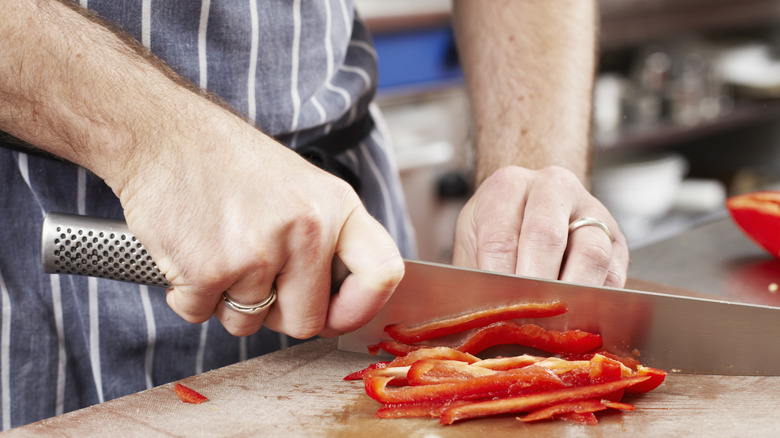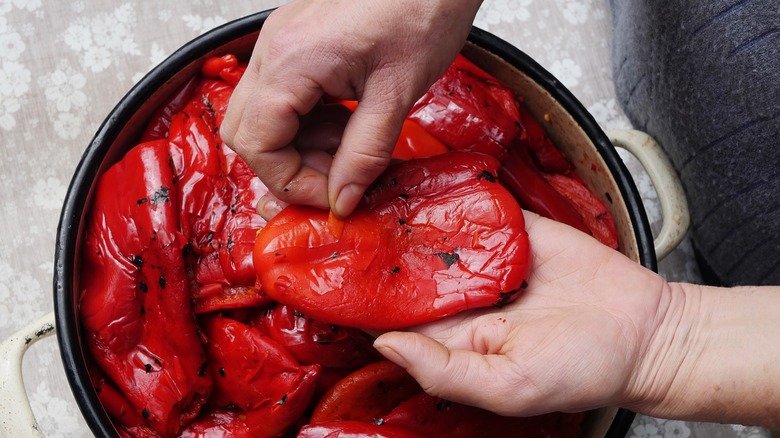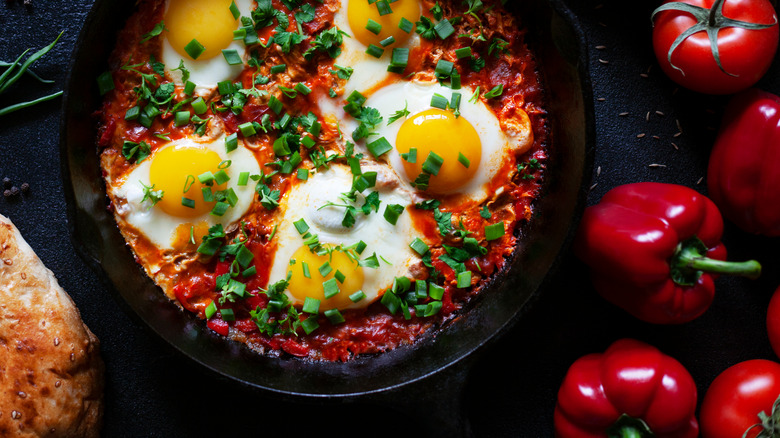The Restaurant-Worthy Secret For Cooking Silky Smooth Red Peppers
We may receive a commission on purchases made from links.
In her posthumously published book, Ingredienti, Marcella Hazan is quoted by her husband, Victor, as saying: "What you keep out is almost as important as what you keep in." Although she was technically warning against doing too much in a recipe, the concept of keeping your ingredients simple centers on the idea that the ingredient is the star of the dish. In order to do this most effectively, your ingredients must be chosen well -– and they must be treated well.
In the case of red bell peppers, Hazan has one secret trick that leaves you with the smoothest, silkiest red peppers. In her cookbook The Essentials of Italian Cooking, which was in many ways the American introduction to true Italian cooking, this technique is featured in her recipe for roasted red and yellow pepper sauce. It may seem unnecessarily fiddly when you first hear it, but she stood by it.
For the silkiest red peppers, peel them
Marcella Hazan is known for her no-frills simplicity in Italian cooking. She's also, perhaps, solely responsible for elevating Italian food outside of Italy. If she said peeling your bell peppers is a worthwhile step, it must be tried. The result is a melt-in-your-mouth pepper softened on all sides with no papery skin to stick to your teeth and tongue.
There are two ways to achieve this restaurant-worthy treatment of red bell peppers. The first is to take the time to roast them. Blistering the pepper makes the skins slide right off, but it takes time, attention, and oven, broiler, or gas burner space to do. The second way is more conventional: slide a vegetable peeler over the skins and peel them quickly, allowing you to move right through your prep and get to cooking so that you can get to eating. Marcella recommended using a swivel peeler and peeling with a light sawing motion.
When you should (and shouldn't) peel your peppers
By peeling your peppers, you're achieving the same texture that roasted peppers offer, but with the benefit of an extra-bright flavor. Peeling will affect the stability of the pepper, so it is not the recommended preparation for a stuffed bell pepper –- it will burst, melt, and face a catastrophic structural failure in the oven. Anytime a bell pepper requires structure, the skin should remain on. If your recipe will benefit from a bit of char on the skin of the pepper, as in the case of a Philly cheesesteak or fajita (where the pepper can gain flavor from the hot griddle), don't peel them.
In all other cases, though, Marcella would have you peel your peppers. Blanched or quickly sautéed for a salad? Peeled. In soffritto? Peeled. Warming up with a comforting, creamy, smooth bowl of red pepper soup? Peeled. Making shakshuka? Definitely peeled. The peppers will melt into the tomato-based sauce that the eggs will cook in, rather than remaining tough and stringy from the skins.
As Marcella said in her book, Marcella Says, "Simple doesn't mean easy. I can describe simple cooking thus: Cooking that is stripped all the way down to those procedures and those ingredients indispensable in enunciating the sincere flavor intentions of a dish." One part of that is peeling your peppers.


